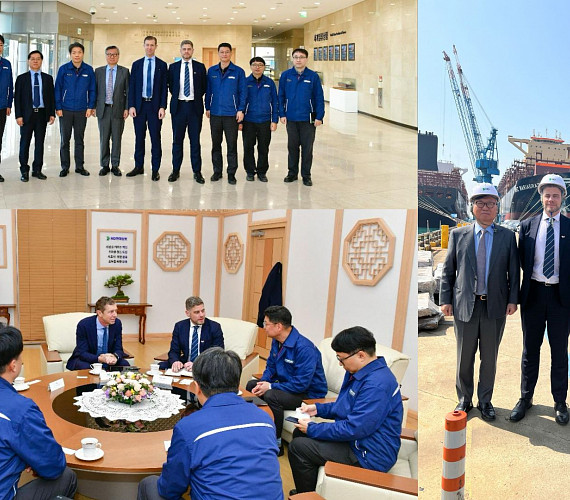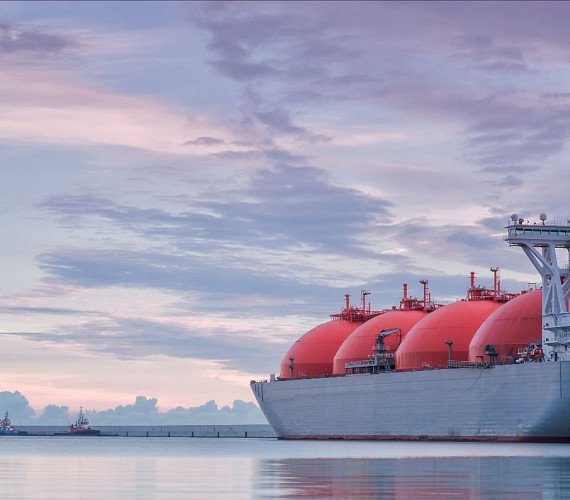Shipping, as you can hardly have failed to notice, is a highly conservative industry, and persuading owners to take a chance is a challenge that has thwarted the ambitions of many innovative startups. “If you’re trying something new the natural reaction is to question why somebody hasn’t tried it before,” says Noah Silberschmidt, CEO of Silverstream Technologies. “Starting a company in the technology space is a lot of fun but very hard. We’ve believed in our technology and worked continuously to get to the point where we’re signing MOUs.”
The MOU in question was signed in August with CSSC’s Hudong-Zonghua shipbuilding group and will see Silverstream’s patented air lubrication technology incorporated into the newbuilding designs for future LNG carriers and with that, a potential fuel and emission savings of 6-8%. It marked a watershed moment for the company that Silberschmidt founded nearly a decade ago.
“Because our system will be installed as standard it means they won’t charge extra for designing it in. Our experience in China is that they’re very open to making their ships better, whereas other shipbuilding nations can be reluctant to changing designs because they’re set up for building ships to a high standard in a very well planned way and to develop an integrated design can take more than two years.”
Although the concept of using air bubbles to reduce hull frictional resistance was first developed by the US Navy during World War II, primarily as a means of making a ship less detectable by radar, it’s potential as an energy-saving technology has only been explored in more recent years. However, one of the challenges is delivering compressed air to the ship’s bottom in a manner that both uses as little energy as possible while getting the best lubrication effect.
The uniqueness of Silverstream’s air release system, Silberschmidt tells The Naval Architect, is that it exploits Kelvin-Helmotz instability, the sheering effect created by the differing velocities of air and water, giving rise to microbubbles. At a draught of 10m or more these bubbles have hydrostatic pressure, meaning they have no buoyancy, bouncing off each other in the boundary layer. Meanwhile, the system’s algorithm ensures air production is regulated according to the speed, draft and weather to prevent energy waste.
“If you have a 280m-long cruise ship, with a flat bottom of 230m, travelling at 16knots, then within 30 seconds the bottom is fully lubricated and you’ll see the shaft power go down. When we’re testing, we’ll keep the RPM constant and compare the speed from before the system was started until 15 minutes later. Typically there will be a gain, which at low speeds could be 1knot or more. We convert the speed increase into a power saving then deduct the compressor power, to find the net saving.”
The methods used by some rival manufacturers when making claims about energy savings is a particular point of contention for Silberschmidt. “When we started out Mitsubishi was claiming its [Mitsubishi Air Lubrication System] could save you 25%, while we initially said we could save 5%. If we are talking about saving 1MW for a given vessel then our gross saving would be 1.3MW, because we’re using 0.3MW on compressor power. So we cannot understand when we see competitors that are expending 1 or 1.5MW in energy because they cannot be making any saving.”
Air lubrication is an EEDI-approved technology and for some sectors of the merchant fleet struggling to achieve the requisite efficiency score, such as ro-ro’s and ro-paxes, it could offer a potential solution (last year, Silverstream signed a contract with Grimaldi that will see the system installed onboard 12 new hybrid ro-ro ships). However, there is no third-party testing process for air lubrication systems and a number of trial projects involving rival technologies have either presorted negative results or declined to make their findings public. “When I came into the industry, I found a complete disconnect with how people come up with their numbers. You have to be extremely well educated and used to working within this area to understand what it really means,” explains Silberschmidt.
To that end, Silverstream is a member of the IMO Global Industry Alliance, a private-public partnership involving the IMO, technology companies and classification societies, which is developing a model to help shipowners better understand how energy efficient technologies work and give shipowners a better understanding of the likely savings. “This is not about promoting any particular technology but give the shipowner a tool and be able to better evaluate what’s being offered.
The Naval Architect: November 2019



